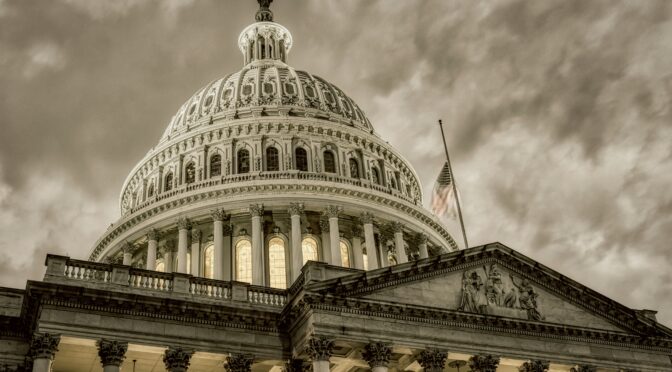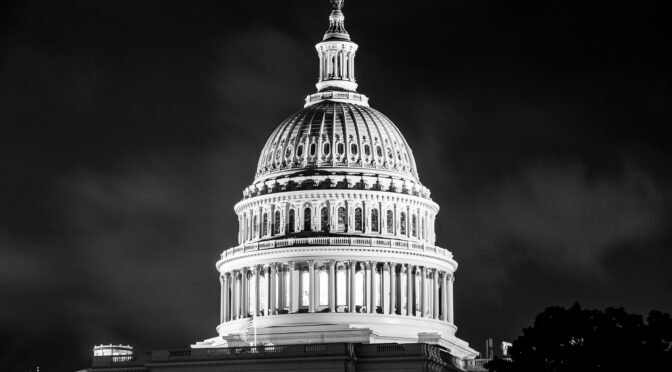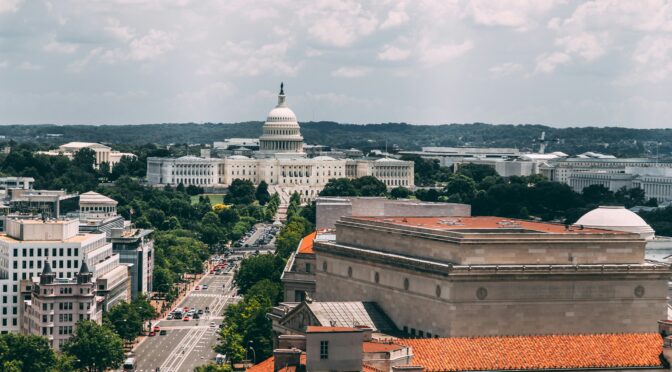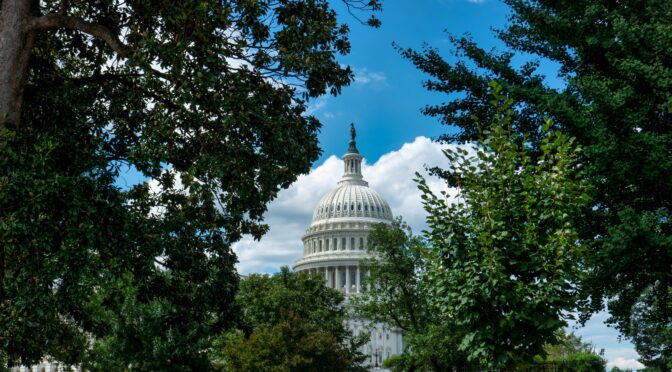By Sean Robins, NACAC’s director of advocacy
Welcome to the latest Advocacy Update on NACAC’s Admitted blog. With our annual conference in Columbus, Ohio just days away, we look forward to connecting with members and partners about the issues shaping higher education. In Washington, D.C., budget deadlines and policy shifts continue to place institutions and students under pressure, with Congress still debating how to fund the government beyond the Oct. 1 deadline. NACAC remains focused on ensuring students have equitable access to higher education and institutions have the resources to serve them.
Please note: the next issue of the Advocacy Update will be published on Sept. 26, following the annual conference, and we will be happy to bring you further updates then.
Policy & Legislative Updates
A government shutdown is looming while Congress weighs a continuing resolution (CR) to keep the government funded past Oct. 1. Republican appropriations leaders have proposed a short-term extension through November, while the administration favors a January extension that would carry funding a third of the way into FY 2026. Democrats have pushed back, noting that passage in the Senate requires 60 votes and therefore bipartisan support. It is unclear if Democrats will approve a “clean” CR, as they want certain priorities included and assurances that enacted funding will not be withheld or rescinded.
Federal funding and policy developments continue to place higher education institutions and students under significant strain. The University of California system recently warned state leaders that federal funding cuts could cost billions and devastate campuses. UC President James B. Milliken highlighted that $500 million has already been frozen at UCLA, warning that continued reductions would force deep cuts to classes, student services, research, and health care, while driving talent out of the state. The stakes are high and immediate, illustrating how federal funding uncertainty directly impacts institutional capacity and student opportunity.
At the federal level, the Department of Education has made several major policy shifts. Most IDEA Part D competitive grants will continue, but $14.8 million has been canceled, redirected to teacher training programs. Some grantees must now certify alignment with the administration’s priorities before receiving awards, and programs referencing diversity, equity, and inclusion concepts were disproportionately affected, signaling a narrowing of federal priorities. Similarly, the department announced discretionary grant programs for minority-serving institutions will be eliminated, impacting Hispanic-Serving Institutions, Predominantly Black Institutions, Alaska Native and Native Hawaiian-Serving Institutions, Asian American and Native American Pacific Islander-Serving Institutions, and Native American-Serving Nontribal Institutions. These actions place $350 million in federal support at risk and raise concerns about destabilizing under-resourced campuses, though HBCUs and Tribal Colleges and Universities remain unaffected.
The Department of Education also is expanding its Office of Consumer Education and Ombudsman to provide students and families with guidance on the risks and benefits of borrowing for college. The shift reflects concerns over the $1.7 trillion federal student loan portfolio and high default rates, with new accountability measures also being developed for loan servicers. The department is simultaneously planning to propose new regulations to streamline the termination of federal funding for institutions found in civil rights violations. This comes amid the Trump administration’s aggressive use of civil rights investigations to freeze or pull billions from institutions over diversity efforts, transgender student inclusion, and responses to campus antisemitism.
Other administrative actions include ending the National Blue Ribbon Schools program, which recognized more than 9,000 schools for academic achievement and progress in closing achievement gaps since 1982. The department cited a desire to “return education to the states,” though this raises questions about consistency and visibility of recognition at a national level. Additionally, the Trump administration is shifting adult education programs to the Department of Labor under a new state plan portal, raising concerns about weakening career and technical education and reducing federal support for students who depend on these programs.
Institutional and student outcomes continue to be affected by these policy shifts. Transfer outcomes for first-time community college students remain largely stagnant, with only 31.6 percent transferring within six years and fewer than half of those earning a bachelor’s degree. Strategies such as dual enrollment, transferring to public four-year institutions, and completing a credential before transfer improve outcomes and illustrate actionable pathways to strengthen student success. Dual enrollment itself has grown significantly, reaching 2.5 million students in 2022-23. Research shows these students are more likely to apply to and be admitted by selective colleges and secure scholarships, with especially strong benefits for Black and Hispanic students. However, access remains uneven across states, leaving many students without equitable access to these opportunities.
A new analysis from the Center for Appropriate Dispute Resolution in Special Education (CADRE) finds that special education disputes are rising sharply, with written state complaints up 22 percent in 2023-24 and nearly double the 10-year average. States are struggling to manage backlogs amid educator shortages and limited capacity, while the Office for Civil Rights operates at reduced staffing levels. Mediation continues to show high success rates, but federal backlogs are forcing states into roles they are not fully equipped to manage.
Student populations with specific needs are also highlighted in recent research. A new report from the Annie E. Casey Foundation highlights the steep barriers young parenting students face, with dropout rates more than 20 points higher than peers. Financial insecurity, lack of child care, and inflexible policies are cited as major barriers. Pilot programs, such as Miami Dade College’s Mission North Star, demonstrate that targeted institutional support can significantly improve retention and completion rates, particularly for students of color and first-generation students.
Data on broader student learning outcomes and institutional impact reflect both pandemic disruptions and longer-term inequities. NAEP results show record-low scores in 12th grade math and reading, along with widened achievement gaps. While the findings raise concerns about college and career readiness, experts also note that assessments like NAEP may not always receive students’ full attention. Tribal Colleges and Universities continue to demonstrate strong economic and social returns, with graduates contributing billions to the U.S. economy, supporting tens of thousands of jobs, and generating tax revenue at a higher rate than federal investment.
Political and legislative developments are also shaping the higher education landscape. A recent special election in Virginia maintained Democratic control of the 11th District, narrowing the Republican majority in the U.S. House. At the federal level, the House Appropriations Committee advanced a partisan spending bill cutting Title I funding by 26 percent and reducing the Department of Education’s overall budget by 15 percent, while the Senate’s approach remains bipartisan, setting up a contentious budget debate ahead of the Oct. 1 fiscal year deadline. Additionally, a bipartisan coalition of 34 senators is pressing the Department of Education and the Office of Management and Budget to release long-delayed TRIO grants, which serve nearly 870,000 low-income and first-generation students. Delays have forced layoffs and scaled-back services, threatening access to critical advising and support.
Federal research money is set to return to Harvard after a judge ruled the Trump administration’s sweeping funding blockade unlawful. Notices restoring hundreds of grants have begun reaching researchers, though no payments have yet been made. The administration has vowed to appeal, raising the possibility of another disruption.
NACAC Advocacy
This week, NACAC continued its advocacy to protect students’ access to higher education and strengthen pathways to completion. NACAC joined the Student Aid Alliance in urging Congress to reject harmful cuts in the FY26 budget, including the proposed elimination of the Federal Supplemental Education Opportunity Grant (FSEOG) and a nearly 40 percent reduction in Federal-Work Study (FWS). These programs — alongside the Pell Grant — are essential tools that help low-income students access and succeed in college while meeting workforce demand for postsecondary credentials.
At the same time, NACAC joined 31 other higher education associations in calling on the State Department to exempt international students on F, J, and M visas from the June 2025 travel ban. International students already undergo extensive vetting and monitoring, and their presence strengthens U.S. academic excellence, fuels economic growth, and supports global engagement. Ensuring these students can continue to study in the United States without added barriers helps protect enrollment, research, and the nation’s commitment to education exchange.
Ways You Can Take Action
We are continuously updating our Take Action page with opportunities to make your voice heard. If you have not already, I encourage you to advocate on the urgent issues below. You can also view all active advocacy campaigns in the yellow column of the Take Action page.
As federal policy and funding debates continue, NACAC remains steadfast in its commitment to protecting student access, supporting institutions, and advancing equity in higher education. The challenges ahead are significant, but so is our collective capacity to act.
As the late U.S. Supreme Court Justice Ruth Bader Ginsburg reminded us, “Real change, enduring change, happens one step at a time.”
Every advocacy action, every conversation with policymakers, and every effort to amplify student voices moves us closer to a higher education system that serves all students and communities. Together, we can turn uncertainty into opportunity and continue building pathways for student success.
We look forward to advancing this work alongside you in the weeks ahead and sharing further updates in our Sept. 26 issue, following NACAC Conference 2025.




